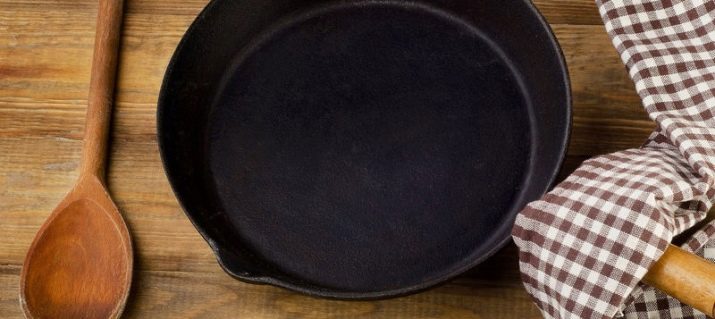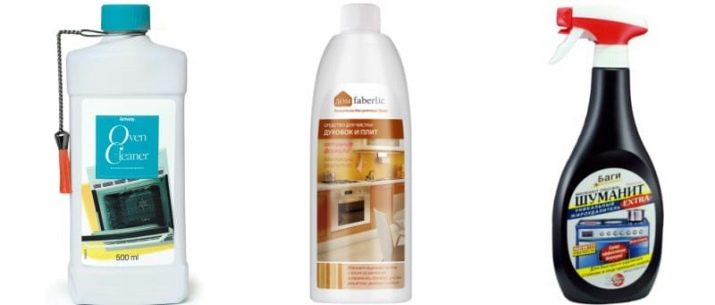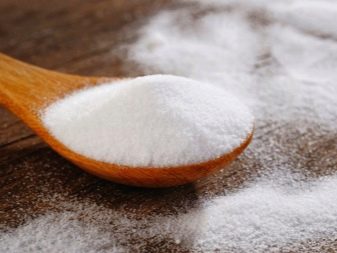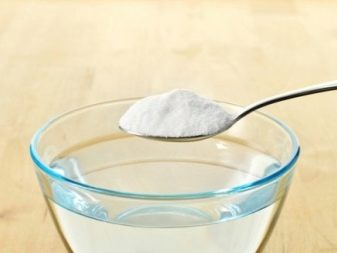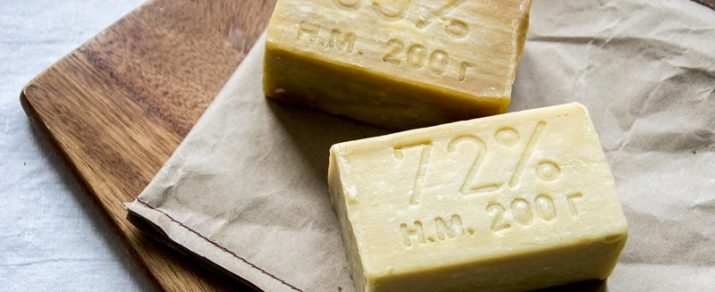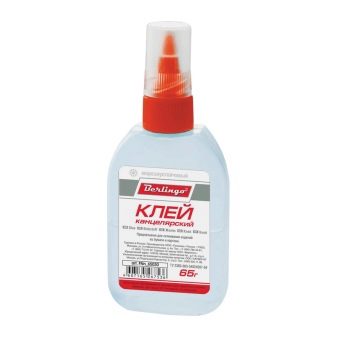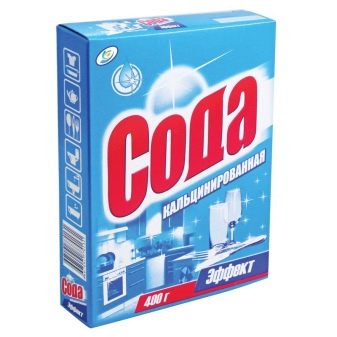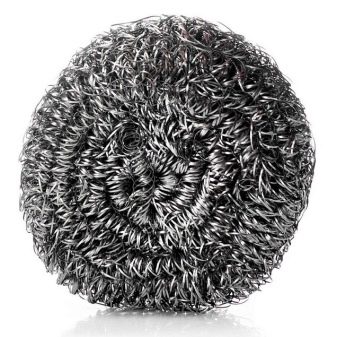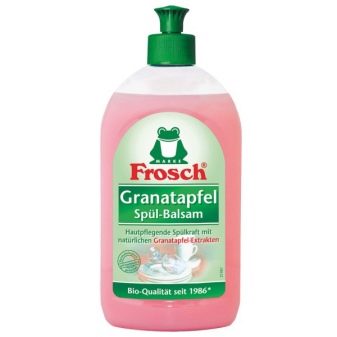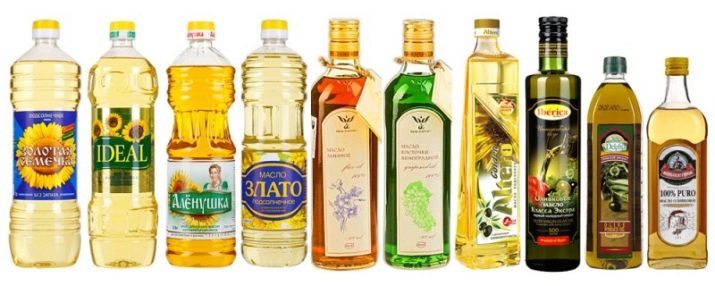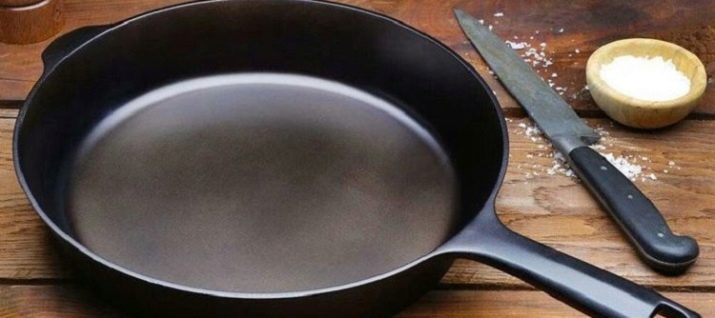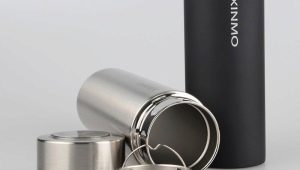How to clean the cast-iron pan from soot?

Today, a lot of modern dishes with non-stick properties are on sale. However, many housewives in the kitchen you will see cast iron pans. And there is an explanation for this: they are reliable, keep warm well, cooked food does not cool down in them for quite a long time.
In addition, they can serve you all your life, unlike dishes with a Teflon coating, which over time can break down and emit harmful substances in the cooking food. But the iron is gradually covered with a layer of soot, which is not always easy to get rid of, and this is its main drawback.
Modern methods
Unfortunately, getting rid of burned fat using conventional dishwashing detergents will fail. You can clean the cast iron pan from soot using a variety of special tools that are sold in a large assortment in any hardware stores.
These tools can be chemical and abrasive, detailed instructions for their use are attached to them. Should know that carry out the procedure using a chemical need in rubber gloves, so as not to damage the skin of the hands. In addition, the pan can be rubbed with a hard metal washcloth.
Abrasives and scourers can leave scratches on the surface. They can be cleaned with fine-grained sandpaper. After cleaning, the pan should be well washed in plenty of running water.
For old pans, you can use the detergent ovens. It is applied with a thick layer and put the pan in a bag of polyethylene. The package should be tied up and keep the dishes in it for 12-13 hours. During this time, the oven cleaner will soften the carbon and you only need to wash it off with water.
If the soot is very old and thick, then you may have to repeat the procedure again.
But our predecessors did not have cleaning products and non-stick coatings that exist today. Nevertheless, they coped with this task.
Many popular methods can be used in our days. They allow you to clean the old griddle from the deposit formed over the years at home.
It happens that in the process of cooking food burns. In this case, do not rush to immediately rub the vessel with metal sponges with soapy water - you will need a lot of time and effort. Better pour water into the pan, put on the fire and bring to a boil. Let the water simmer for a few minutes and turn off the heat. After the water cools, particles of burnt food will be easily removed.
If the carbon layer is thick, salt and soda can be added to the water. If desired, soda can be replaced with vinegar. Salt or soda can also be used without water. Pour them into a container and calcine for 2-3 hours. After calcination, carbon deposits are easily separated from the surface.
Activated carbon can be used as an abrasive. This cheap drug is sold over the counter without a prescription. Purchase a pack of pills and interpret them. Then pour the resulting powder into a lightly moistened pan and leave to act for an hour, and then clean it with a rag or sponge.
An ordinary soap can help get rid of fat. Grate a half of the bar on a coarse grater and put it in a frying pan. Fill with hot water to dissolve the soap. Then boil the soap solution in a frying pan for half an hour. The result will please you.
But soot is formed not only inside. To wash outside, you'll have to use other methods.
Digestion
One of the most effective ways to get rid of a thick layer of burning is digestion.For the procedure will need several ingredients for the preparation of the solution and a large container (bucket or tank), in which the pan fits completely.
Pour water into a container and set it on fire for warming up. In warm water dissolve:
- A piece of laundry soap (72%);
- Two tubes of silicate glue;
- Soda Ash (500 grams).
Laundry soap can be replaced with washing powder, it will take about half a glass. In this case, one tube of silicate glue is enough. Soda will also need half as much.
In a ready solution, lower the pan, the solution should completely cover it. Bring the composition to a boil and boil for a quarter of an hour. Then turn off the heat, cover the container with a lid and leave for a couple of hours, and then proceed to cleaning. You can scrub the carbon with a brush.
It is recommended to carry out this procedure in a well-ventilated area, since the smell of boiling solution can hardly be called pleasant.
Roasting
Another method to remove carbon deposits is burning. Since soot is burned fat, it can be burned to the state of soot, and then scrub it off. In a city apartment, a similar procedure can be carried out on a gas stove. Kindle the burner and set the pan in such a way so that fire burns its outer surface. Procalite one side of it for several minutes, and then scrub the soot formed. Do the same with the other side. Continue until the entire circle has been cleaned.
If you have the opportunity, clean the pan in the country or in another place in nature where you can make a fire. Place a griddle in the fire. Of course, that the plastic or wooden handle must first be removed. Nagar burns out pretty quickly, and after a few minutes you can start cleaning. Be careful - hot iron can leave a burn on the skin.
You can also pour dry sand into a frying pan and ignite it on low heat for 2-3 hours. After finishing the burning, sand is poured out, and the pan is just tapped - the soot will separate itself.
Some people use a blowtorch or gas torch. The griddle is placed on a refractory base and burned. Handles made of plastic or wood should be removed. If this is not possible, this method of cleaning does not suit you.
Indoors, use this method is not worth it because of the danger of a fire. In addition, a strong unpleasant odor will appear during firing. After such procedures, wash the dishes thoroughly.
From rust
If cooked food remained in the container, the dishes were not wiped dry or simply stored for a long time in a humid place, rust could form on the iron. It can be removed not too complicated way. It is easier to remove rust than carbon.
If rust is not removed when washing with conventional means for dishes, you need to resort to more stringent means. Try rubbing with a metallic scouring pad or fine sandpaper. After that, wash the surface with dishwashing detergent.
Rust can be removed with baking soda. Mix some quantity with water until a thick slurry forms and rub rust on it. Leave the gruel to act for a few minutes, then rinse with running water.
Similarly, you can use rock salt, which is always in the kitchen of any hostess. Similarly, make a slurry of salt, adding water to it. The resulting mixture thoroughly rub rust. Salt particles are a good abrasive agent.
A very original way - remove rust with carbonated drinks. One jar or bottle is enough for you. Their contents need to be poured into the pan and leave for 10-12 hours, and then rinse the dishes in running water.
If these methods fail to clean a large layer of rust, you need to use stronger chemicals that contain hydrochloric acid. This is a strong solvent, with its help you can easily clean the surface of the dish. However, be extremely careful and do not allow drops of acid on the skin and eyes, try not to inhale its vapors. After cleaning thoroughly wash the pan and dry it thoroughly.
Having washed off the pan from rust, do not let it appear again. To do this, dry the container properly using cloth and paper towels or hold it on a low heat for a few minutes.
Restoration of the protective layer
So, you cleaned your grid of carbon or rust. But if you immediately begin to cook on it, then instead of a beautiful dish you will get burnt torn unappetizing pieces of food - the fact is that together with soot or rust you removed the protective layer and now you need to restore it.
This can be done in several ways, but in any case you will need vegetable oil (which is preferable) or any other fat. Cover the bottom and sides of the pan with a thick layer of oil and place it on the stove or oven for 5-10 minutes. Then wipe the surface dry. During the procedure, keep the window open, as the oil will smoke.
Another way is less "fragrant." When it is clean, well-dried pan heated by using a strong fire. After calcining it is oiled and left to cool. After cooling, the pan is washed in warm water without any detergents and wipe dry.
Calcination can also be carried out with salt. Before heating it is poured with a thick layer on the bottom of the pan. The salt will gradually darken and turn brown. After that, turn off the fire and let the salt cool slightly. Then, with the cooled salt, rub the inner surface, apply oil on it and heat the pan in the oven.
In order for the faithful assistant to serve you for a long time, she needs to properly use:
- if the dishes are idle for a long time, rust formation is inevitable;
- do not store cooked food in it, but transfer it to another container;
- soak the pan for an hour before washing;
- Clean and dry the dishes in a timely manner, and after cleaning, lubricate with oil.
How to clean the cast iron skillet, see the next video.
